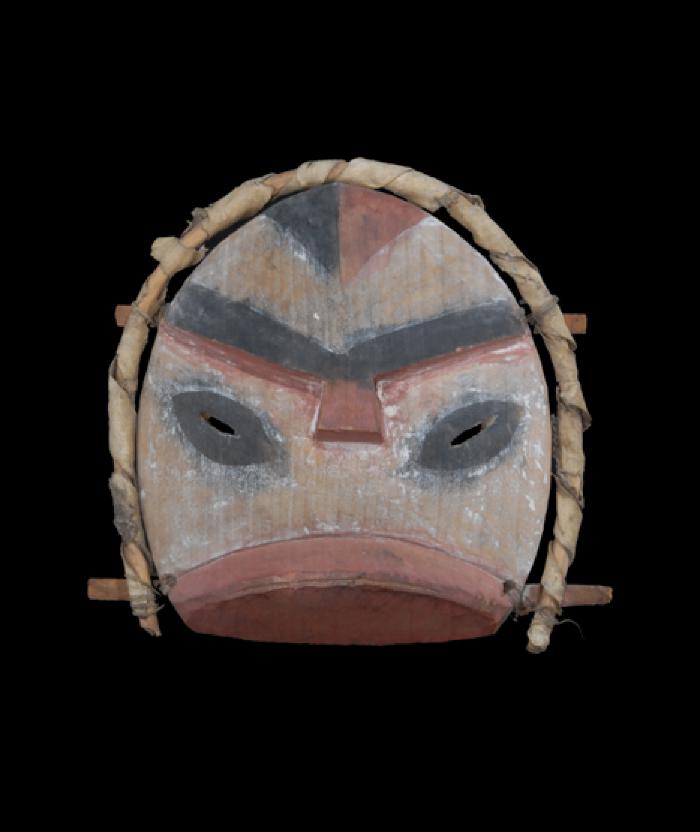Mask — Maas’kaaq, Giinaruaq, Giinaquq

Masking is an ancient Alutiiq tradition. For centuries, Native artists carved images of powerful ancestors, animal spirits, and mythological beings into wood and bark. Masks were made in many sizes. Palm-sized miniatures may have been used to teach children traditional stories or carried by adults as amulets. Dancers wore full-sized portrait masks and enormous plank masks during ceremonial performances.
Masks were often brightly painted and adorned with a variety of attachments. Feathers, fur, and small wooden carvings were tied to an encircling hoop. Some masks were held in the hands or teeth, others were tied to the dancer’s head, and very large pieces may have been suspended over performance areas. A long-headed mask was a sign of power and authority. A whistling mask could conjure spirits.
Following ceremonies, masks were broken and discarded. This tradition reflects the spiritual power of the images they portrayed. Masks were part of the dangerous process of communicating with the spirit world. They were used in dances that ensured future hunting success by showing reverence to animal spirits and ancestors.
While Elders today remember the older word giinaquq, most today use the words giinaruaq (like a face) and maas’kaaq (borrowed from Russian) for mask. Today, “masking” refers to a tradition that takes place during the Christmas season, when revelers visit village households in disguise singing and dancing.
